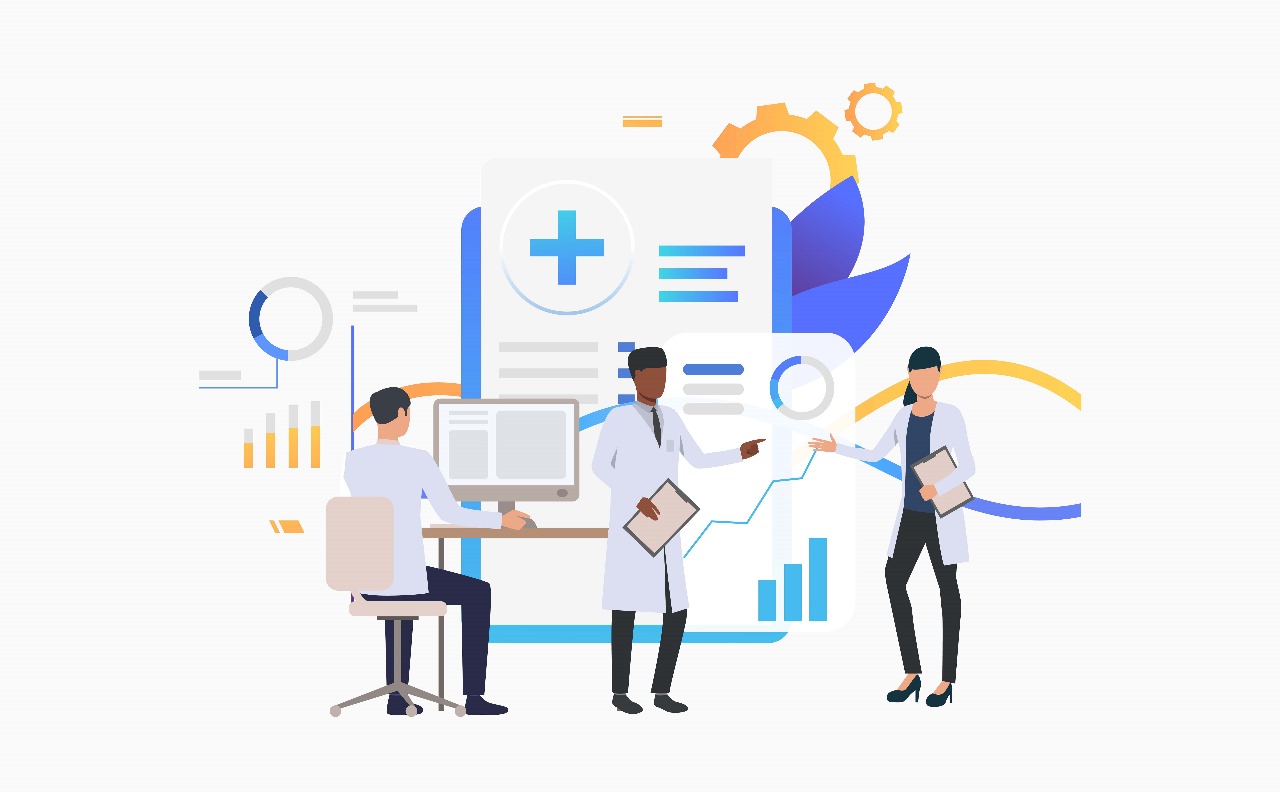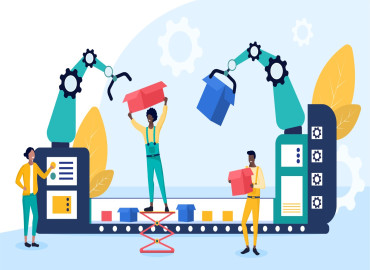by Miriam Haaf
4 minutes
Optimizing Pharma Supply Chains with Advanced Analytics & Automation
Optimize pharma supply chains with data analytics & automation. Drive efficiency, resilience, and agility for today’s complex challenges.

The pharmaceutical industry has always faced complex challenges, but the post-pandemic landscape presents a new set of operational hurdles. With rising demands for personalized medicine, new therapies, and an increasing number of regulations, pharma supply chains must become more efficient and resilient than ever before.[1] Advanced analytics and automation have emerged as powerful tools that enable this transformation. This article explores how data-driven approaches, automation and AI-enabled solution can help optimize supply chains, providing practical insights for pharma executives and supply chain professionals.
The Role of Data in Pharma Supply Chains
Pharma supply chains operate under intense pressure, requiring precision and efficiency across every step. The growing complexity of products, such as cell and gene therapies has significantly increased the cost of manufacturing and logistics. According to a recent Boston Consulting Group (BCG) report, companies are now focusing on end-to-end supply chain approaches that enhance visibility and efficiency, particularly in light of new regulatory requirements and technological disruptions.[2]
Data serves as the foundation for operational visibility. Just like a lighthouse guiding ships safely to harbor, real-time data allows companies to navigate their supply chains, helping them avoid disruptions and reach their operational goals efficiently. By integrating data from various sources, such as suppliers, production sites, and logistics partners, companies can create a unified view of the supply chain, enhancing collaboration and decision-making.
Impact of Advanced Analytics on Supply Chain Efficiency

Advanced analytics is reshaping the way pharmaceutical companies approach supply chain management. Predictive analytics, in particular, have become a game-changer, enabling companies to anticipate disruptions, optimize inventory, and manage risks more effectively. For example, by using historical data, companies can predict fluctuations in demand, allowing them to adjust their production schedules and inventory levels accordingly.
One of the key benefits of advanced analytics is scenario planning. In a recent use case from my consulting work, a major pharmaceutical company improved its decision-making process by implementing a tool that enabled better trade-off decisions around inventory reduction. This solution provided real-time insights into the financial implications of various scenarios, empowering supply chain managers to make data-driven decisions that effectively balanced cash flow optimization, local production efficiency, and overall operational stability.
Incorporating advanced analytics into supply chain management doesn't just help in day-to-day operations; it also prepares companies for the future. A report by McKinsey emphasizes how pharma companies are increasingly focusing on building resilience through predictive tools that can mitigate risks such as geopolitical tensions, climate change, and cyberattacks.[3]
Advanced analytics, specifically the predictive part, can be used as a foundation for automation. Once established with solid data, these predictive tools can drive automation by providing accurate forecasts and insights, enabling more efficient and partially automated data-driven decisions.
The Role of Automation in the Pharma Supply Chain

Automation has long been a critical component of supply chain management, but the integration of AI is taking automation to new heights. Hyper-automation, where AI is integrated into automated workflows, allows for a more autonomous supply chain. AI in automation often acts like a CoPilot, helping business users create automation workflows more quickly and effectively. Alternatively, users can act as conductors, orchestrating multiple AI-powered assistants embedded within automation platforms. AI-driven automation can reduce costs, minimize errors, and improve service levels by accelerating processes and enabling real-time decision-making.
However, AI is not always the most suitable technology for every task. Sometimes, using AI for a relatively simple process can be excessive. It’s like taking a Formula 1 car for an easy 20-minute drive to the supermarket – sure, it’s a high-performance vehicle, but a regular budget car would be more than sufficient and a lot less costly. The same principle applies to automation in supply chains: while AI can be powerful, simpler automation technologies, such as robotic process automation (RPA), can handle many repetitive tasks just as effectively, and without the heavy price tag of AI systems.
According to Bain & Company, 40% of pharmaceutical executives have incorporated expected savings from AI into their 2024 budgets[4], but it’s important to weigh these potential savings against the often higher subscription and maintenance costs associated with AI platforms. In many cases, traditional automation tools can be a better fit for companies that want efficiency without the complexity and expense of AI.
One example from the industry is a global pharma company facing high lead-time volatility during its order-to-delivery process. They turned to process mining and predictive analytics to address the issue. By automating the delivery creation process based on real-time stock and transportation data, they significantly reduced delays and improved customer satisfaction. This type of automation didn’t require AI but was incredibly effective in eliminating manual bottlenecks while providing the flexibility needed to adapt quickly to changing circumstances.
Future Trends: AI and Hyper-Automation

As the pharma industry continues to evolve, the use of AI and hyper-automation will become even more critical. A prime example is the integration of AI copilots into automation suites, which dramatically accelerates the creation of automated workflows. Traditionally, building automation workflows could be time-consuming, requiring technical expertise and significant manual configuration. AI copilots, however, make this process faster and more intuitive for business users by guiding them through the setup, suggesting optimal configurations, and even automating parts of the workflow design. This means that companies can implement automation use cases more quickly, reducing lead times for deployment and scaling.
In practical terms, this results in faster adoption of solutions like demand forecasting, production scheduling, and transportation route optimization, with enhanced accuracy. AI copilots enable business users—who may not be automation experts—to take full advantage of these technologies, leading to quicker turnaround times, fewer errors, and a more agile supply chain that can adapt to real-time changes. As a result, pharma companies can not only improve operational efficiency but also respond to market demands and disruptions with unprecedented speed.
The future of pharma supply chains lies in the seamless integration of AI-driven analytics and automation. By moving towards hyper-automation, companies can achieve a more resilient and responsive supply chain that is capable of withstanding external shocks and maintaining high levels of efficiency.
Pharmaceutical companies are also exploring more and more the use of composite AI, an approach that combines multiple AI techniques to improve decision-making. This technology allows for more precise predictions, helping companies optimize everything from production schedules to logistics planning.[5]
The Importance of Change Management
While the advantages of data analytics and automation are clear, successfully implementing these technologies hinges on effective change management. In fact, 90% of companies that succeed in automation allocate more than half of their budget to change management efforts.[6] This investment serves two key purposes: first, to build acceptance and support for new tools and ways of working, and second, to cultivate a deep understanding and a shift in employee mindset.
A crucial part of this transformation is fostering a data-driven culture across the organization. Supply chain managers and executives must be trained not only to use new technologies but also to interpret and act on the data these tools generate. Joint performance reviews, transparent communication, and aligned goals are essential for ensuring that all teams are moving in the same direction, working towards shared objectives.
Where to Start: Practical Steps for Implementing Advanced Analytics and Automation
For pharmaceutical companies aiming to adopt advanced analytics and automation, the journey begins with a detailed assessment of current operations, defining clear objectives and initiating the first pilots. These initial 3 steps are critical to identifying inefficiencies and pain points where improvements can be made. And here is how to get started:
Assess the Current State of Operations: Begin by mapping out your supply chain processes from end to end. This involves identifying key areas where bottlenecks, manual processes, or inconsistencies occur. These areas of inefficiency represent opportunities for automation and data-driven insights. Engaging various stakeholders across departments will help capture a comprehensive view of the current state, as well as areas where immediate improvements are possible. This assessment provides a solid foundation for prioritizing where automation and advanced analytics can have the most significant impact.
Define Clear Objectives and Metrics: Establish specific goals for your analytics and automation initiatives. Are you looking to improve forecasting accuracy, reduce production lead times, enhance inventory management, or increase overall operational efficiency? Clear objectives will help direct resources effectively and ensure alignment across teams. Additionally, set key performance indicators (KPIs) to measure progress and success, ensuring that any implemented technologies deliver tangible results.
Start Small and Scale: It’s often wise to start with a pilot project. Choose a single area of the supply chain where automation or advanced analytics could deliver quick wins, such as streamlining delivery execution processes or optimizing warehouse operations. By focusing on one area, you can test, learn, and refine your approach before expanding automation efforts across the entire supply chain. Starting small reduces risk, encourages stakeholder buy-in, and provides proof-of-concept before scaling.
Once this groundwork is laid, organizations can proceed with the following steps:
Invest in Predictive Analytics: By leveraging historical data, companies can forecast demand more accurately, anticipate disruptions, and make informed decisions about production and inventory management.
Automate Repetitive Processes: Implement RPA or other automation tools to handle routine tasks, allowing employees to focus on more strategic areas.
Integrate AI with Automation: Consider incorporating AI copilots into automation workflows to enhance decision-making and increase the speed of operations.
Focus on Change Management: While introducing new technologies, ensure all teams understand how the innovations will affect their roles. Training and communication are key here. An effective change management plan ensures that technology adoption is smooth and that employees feel empowered, not displaced, by automation and advanced analytics.
Conclusion: Embracing the Future of Pharma Supply Chains
The pharmaceutical supply chain of the future is one where advanced analytics, automation, and AI-enabled solutions work together to create more efficient and resilient operations. By harnessing these technologies, pharma companies can reduce costs, enhance service levels, and better manage risks in an increasingly complex environment.
However, technology alone is not enough. Effective change management is critical to ensuring the successful adoption and integration of these tools. Pharma executives and supply chain professionals must prioritize aligning their teams around clear goals, fostering a data-driven culture, and investing in the necessary training and communication to support this transition.
The time to act is now. Embracing these new technologies is essential to staying competitive. But the true key to success lies not only in the tools themselves, but in preparing the organization—through strategic change management—to fully leverage the power of data in driving every aspect of the supply chain.
References
[1] Emerging from disruptions: the future of pharma operations strategy | McKinsey
[2] BCG’s Transformative End-to-End Supply Chain Approach | BCG
[3] Emerging from disruptions: the future of pharma operations strategy | McKinsey
[4] 40% of pharma executives are baking expected savings from Generative AI into 2024 budgets | Bain & Company
[5] Succeeding in the AI supply-chain revolution | McKinsey
[6] Winning in automation requires a focus on humans | McKinsey




